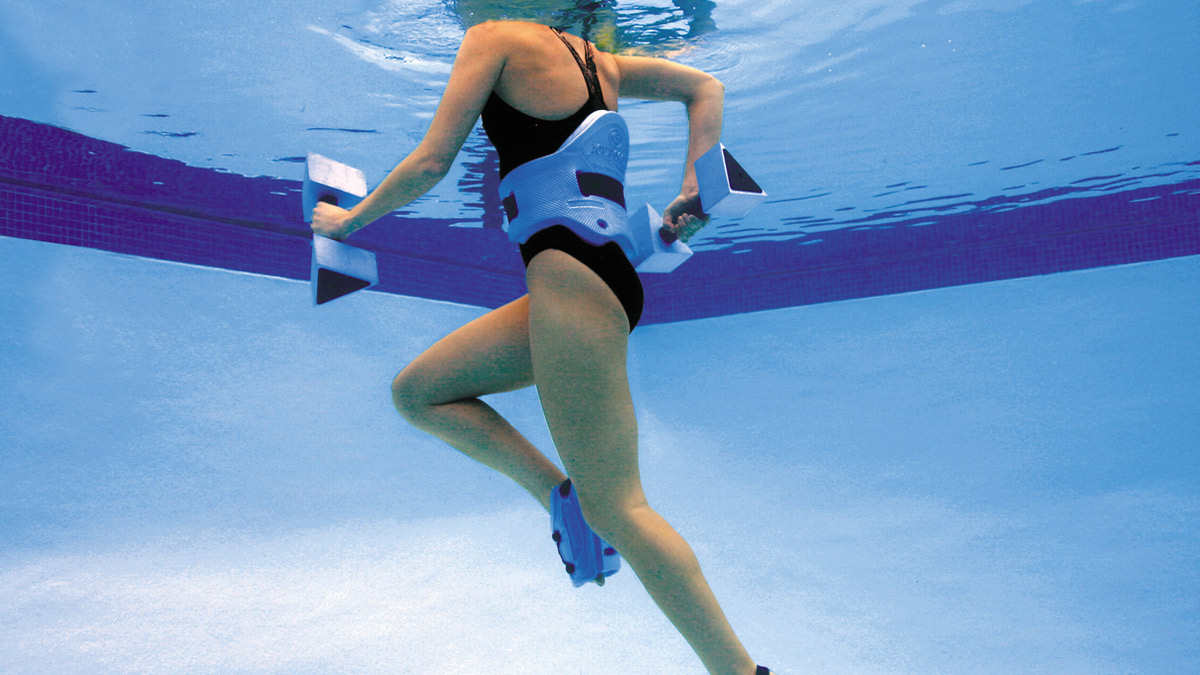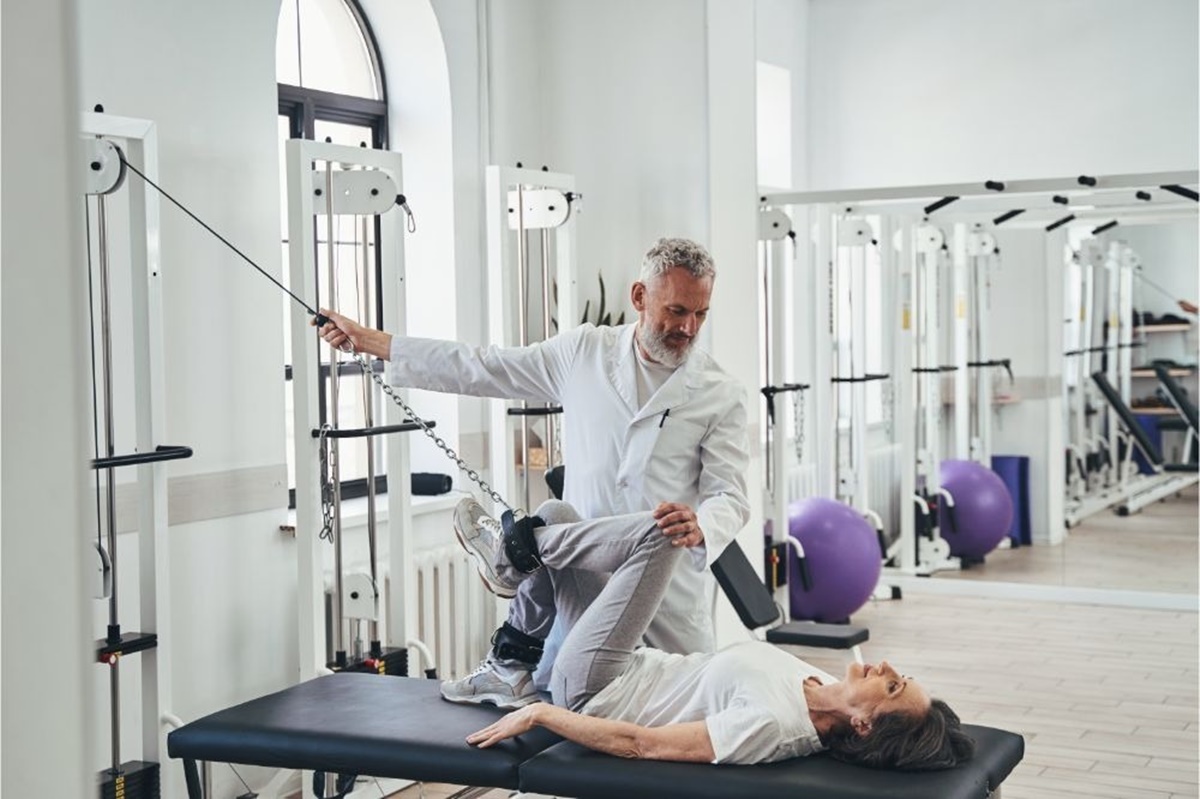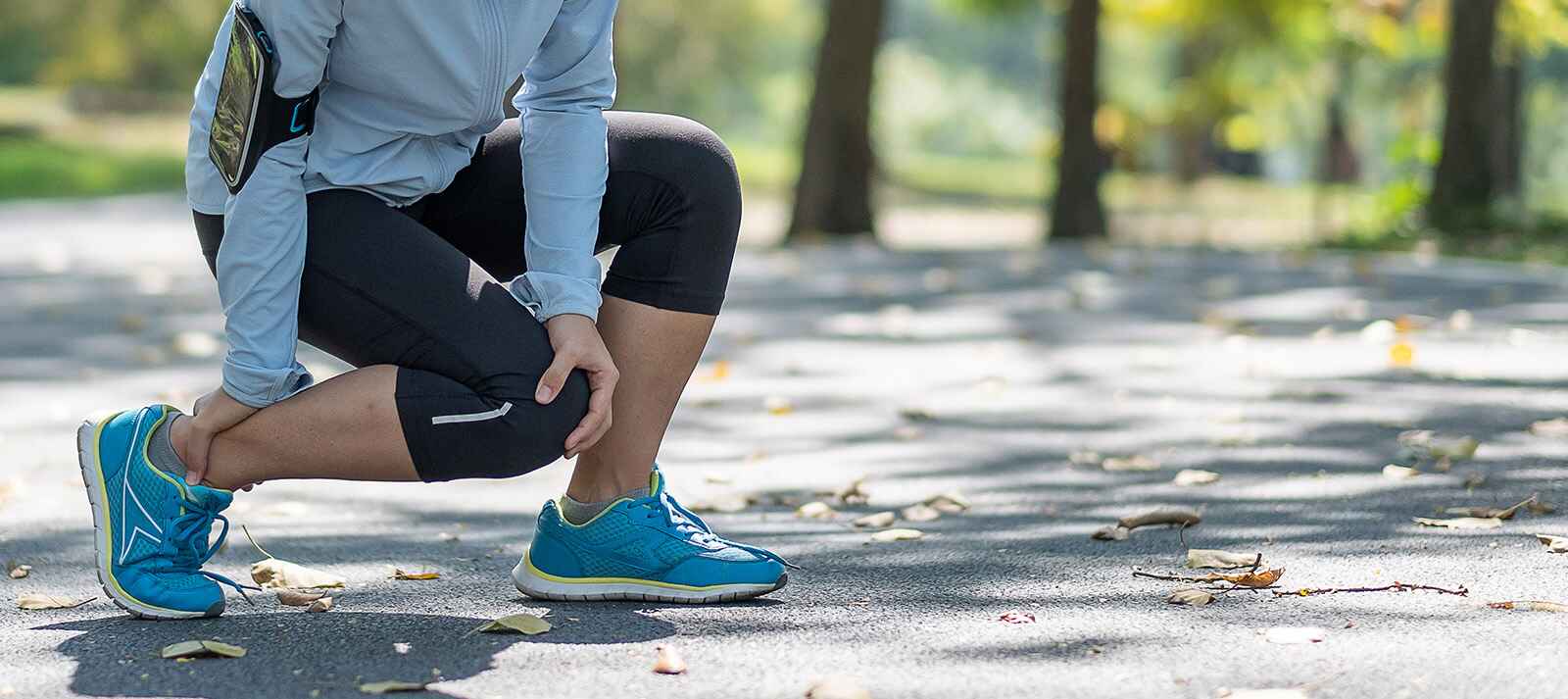Home>Misc>Featured>When Can I Start Jogging After ACL Surgery


Featured
When Can I Start Jogging After ACL Surgery
Modified: January 2, 2024
"Discover when you can safely resume jogging after ACL surgery. Our featured article provides expert advice and tips for a successful recovery."
Introduction
Recovering from ACL surgery can be a long and challenging process. Whether you’re an athlete or just someone who loves staying active, one of the burning questions on your mind may be, “When can I start jogging again?” After all, jogging is not only a great form of exercise but also a therapeutic activity that can help you regain strength and flexibility in your knee. In this article, we will explore the timeline for returning to jogging after ACL surgery and provide some valuable tips to make your transition smooth and successful.
Before we delve into the specifics, let’s briefly understand what ACL surgery entails. The anterior cruciate ligament (ACL) is one of the major ligaments in your knee, providing stability and preventing excessive forward movement of the tibia (shinbone) in relation to the femur (thighbone). ACL injuries are common among athletes and can occur due to sudden stops, twists, or direct blows to the knee.
ACL surgery is performed to reconstruct or repair the torn ligament. The surgical procedure may involve using a graft (tissue) from either your own body or a donor to replace the damaged ACL. Following the surgery, a period of rest and rehabilitation is crucial to allow the knee to heal, regain strength, and restore normal function.
The initial recovery period after ACL surgery typically lasts a few weeks to a couple of months, depending on the severity of the injury and the individual’s overall health. During this time, you will work closely with a physical therapist to regain range of motion, build strength in the surrounding muscles, and improve stability in your knee. The rehabilitation process usually includes exercises, manual therapy, and other modalities tailored to your specific needs.
As you progress through the rehabilitation process, you will eventually reach a point where jogging becomes a consideration. However, it’s important to remember that this milestone should not be rushed. Gradually reintroducing jogging is crucial to avoid reinjury and ensure a successful return to this activity. Ignoring the recommended timeline or pushing yourself too hard can lead to setbacks and hinder your progress.
It’s also essential to listen to your body during the recovery and return-to-jogging process. Every individual’s healing process is unique, and there may be variations in the timeline for resuming jogging depending on factors such as the type of surgery, age, overall health, and compliance with rehabilitation exercises.
Now that we have a foundation of understanding, let’s delve deeper into the gradual return to jogging after ACL surgery, and some essential tips to keep in mind along the way.
Understanding ACL Surgery
ACL surgery, or anterior cruciate ligament surgery, is a common procedure performed to repair or reconstruct a torn ACL in the knee. The ACL is a key ligament that provides stability and helps to prevent the tibia (shinbone) from moving too far forward in relation to the femur (thighbone). Injuries to the ACL are often the result of sports activities or accidents that involve sudden stops, pivoting, or changes in direction.
When an ACL tear occurs, the stability of the knee joint is compromised, leading to pain, swelling, and a decreased ability to participate in physical activities. ACL surgery aims to restore stability and function to the knee by repairing or replacing the torn ligament.
There are a few different surgical techniques that can be used for ACL reconstruction. One common method involves using a graft from another part of the body, such as the patellar tendon or hamstring tendon, or using a cadaver graft. The surgeon will make small incisions and insert small instruments, including an arthroscope, to guide the procedure. The torn ACL is then removed, and the new graft is secured in place with screws or other fixation devices.
The recovery process after ACL surgery can be lengthy, typically taking several months before individuals can return to their previous level of physical activity. The immediate post-operative period focuses on managing pain and swelling, as well as regaining range of motion in the knee joint.
After the initial healing phase, physical therapy becomes a crucial component of the recovery process. The goal of physical therapy is to strengthen the muscles around the knee, improve balance and stability, and gradually reintroduce activities and movements that mimic those performed during sports or everyday life.
It’s important to note that the success of ACL surgery and the overall outcome of rehabilitation depend on several factors, including the individual’s age, general health, compliance with rehabilitation exercises, and adherence to the surgeon’s instructions. Each person’s recovery time may vary, and it’s essential to have realistic expectations and patience throughout the process.
In the next sections, we will explore the different phases of recovery and discuss when it is safe to start jogging after ACL surgery. Understanding these phases and following the guidance from your healthcare team will help ensure a smooth and successful return to an active lifestyle.
Initial Recovery Period
The initial recovery period after ACL surgery is a crucial phase that sets the foundation for the rest of your rehabilitation journey. During this time, the focus is on managing pain and swelling, as well as gradually regaining range of motion in the knee joint.
Immediately following surgery, you will be prescribed pain medication to help manage any discomfort. Ice packs and elevation of the leg are also recommended to reduce swelling. Your surgeon may provide you with a knee brace or immobilizer to support the knee and facilitate healing.
You will likely need crutches to assist with walking and to minimize weight-bearing on the surgical leg. It is important to follow your surgeon’s instructions regarding weight-bearing limits and the use of crutches. These measures are necessary to protect the healing ligament and prevent further damage.
Physical therapy will begin shortly after surgery, and the primary focus will be on regaining knee range of motion. Initially, exercises may involve gentle movements to bend and straighten the knee without putting too much stress on the healing ACL. Your physical therapist may also use manual techniques to help enhance range of motion.
Over the course of the initial recovery period, as pain and swelling subside, you will gradually start to regain strength in the muscles around your knee. Physical therapy sessions will involve targeted exercises to strengthen the quadriceps, hamstrings, and calf muscles. These exercises help support the knee joint and enhance stability.
Your physical therapist may also introduce gentle weight-bearing exercises to promote bone healing and maintain bone density. However, it’s important to follow the guidance and restrictions provided by your healthcare team to avoid putting excess stress on the knee during this early stage.
In addition to physical therapy, your healthcare team will provide guidance on wound care, managing incision site hygiene, and preventing infection. They will also instruct you on how to use crutches properly, navigate stairs safely, and perform activities of daily living while protecting your healing knee.
The duration of the initial recovery period varies depending on individual factors such as the type of surgery performed, the extent of the injury, and the body’s healing response. In most cases, this phase lasts several weeks to a couple of months.
It’s important to stay committed to your physical therapy exercises and follow your healthcare team’s instructions during this stage. This will pave the way for a smoother transition into the next phase of rehabilitation and increase the likelihood of a successful return to jogging and other physical activities.
Rehabilitation Process
The rehabilitation process plays a pivotal role in the recovery and eventual return to jogging after ACL surgery. It is a comprehensive and structured program that focuses on regaining strength, improving flexibility, and enhancing stability in the knee.
Following the initial recovery period, you will continue working with a physical therapist to progress through different phases of rehabilitation. The specific exercises and techniques used will be tailored to your individual needs, taking into account factors such as your age, overall health, and surgical procedure.
One of the main goals of rehabilitation is to regain full range of motion in your knee. Your physical therapist will guide you through a series of exercises that help stretch and mobilize the joint. These exercises may include gentle stretching, joint range of motion exercises, and activities that incorporate flexion and extension of the knee.
As your range of motion improves, the focus will shift towards strengthening the muscles around the knee. This is crucial for providing stability and support to the ACL. Your physical therapist will prescribe exercises that target the quadriceps, hamstrings, hip muscles, and calf muscles. These exercises may include resistance training, weight-bearing exercises, and functional movements to simulate activities you will perform while jogging.
Balance and proprioception training are important components of ACL rehabilitation. These exercises help improve coordination and enhance stability in the knee joint. Your physical therapist may incorporate activities on wobble boards, balance discs, or foam pads to challenge your balance and improve your body’s ability to respond to different surfaces and movements.
In addition to exercises, your physical therapist may use other modalities such as manual therapy, ultrasound, or electrical stimulation to assist with pain relief, decrease muscle tightness, and promote healing.
Throughout the rehabilitation process, you will gradually progress from simple exercises to more complex movements. Your physical therapist will guide you on increasing the intensity, duration, and difficulty of the exercises as your knee gains strength and stability. This progressive approach is essential for minimizing the risk of reinjury and preparing your body for the demands of jogging.
Consistency and adherence to the rehabilitation program are vital for optimal recovery. This includes attending regular physical therapy sessions, performing prescribed exercises at home, and incorporating strategies for pain management and swelling control as directed by your healthcare team.
Communication with your physical therapist and surgeon is crucial during the rehabilitation process. They can provide guidance, monitor your progress, and make any necessary adjustments to your program based on your individual needs and goals. It’s important to be open and proactive in sharing any concerns or challenges you may encounter along the way.
Remember, the rehabilitation process after ACL surgery takes time, patience, and dedication. Each individual’s recovery timetable may differ, so it’s important to focus on your own progress rather than comparing your journey to others. With a well-designed rehabilitation program and your commitment to following it, you will be on your way to safely and confidently return to jogging after ACL surgery.
Gradual Return to Jogging
Returning to jogging after ACL surgery is an exciting milestone in your recovery journey. However, it’s essential to approach it with caution and follow a gradual progression to ensure a safe and successful return to this activity.
Before you start jogging, it’s important to check with your surgeon or physical therapist to ensure that your knee is ready for this higher-impact activity. They will assess your progress, evaluate your knee stability and strength, and provide guidance on when it is appropriate to begin jogging.
The timeline for returning to jogging may vary depending on individual factors such as the type of surgery, overall health, and adherence to the rehabilitation program. Generally, it can take anywhere from three to six months or longer before jogging is permitted.
When you are given the green light to start jogging, it’s crucial to ease into it gradually. Begin with shorter, slower sessions, and gradually increase the duration and intensity over time. This allows your body to adapt and build up the necessary strength and endurance to handle the demands of jogging.
It’s recommended to start with a combination of walking and running intervals to gradually transition into full jogging. For example, you can start with a warm-up walk for a few minutes, then alternate between jogging and walking for short intervals (e.g., one minute of jogging followed by two minutes of walking). As you progress, you can gradually increase the duration of the jogging intervals and decrease the walking intervals.
Pay attention to how your knee feels during and after jogging. It’s normal to experience some mild discomfort or fatigue, but sharp pain or excessive swelling could be a sign of overdoing it. If you experience any alarming symptoms, it’s important to stop jogging and consult with your healthcare team.
As you continue to build strength and endurance, consider incorporating strength training exercises specific to jogging, such as single-leg squats, lunges, and step-ups. These exercises help improve muscle balance and enhance dynamic stability, making your knee more resilient during jogging.
Proper form and technique are also important when jogging after ACL surgery. Focus on maintaining a relaxed and natural running posture, with a slightly forward lean. Avoid overstriding and aim for a quick, light stride. This reduces the impact on your knee and can help prevent further injuries.
Don’t forget to warm up properly before jogging and cool down afterward. This includes gentle stretching exercises for your lower body to improve flexibility and minimize post-workout soreness and stiffness.
Throughout the gradual return to jogging, it’s important to monitor your progress and stay in close communication with your healthcare team. Regularly attend follow-up appointments and physical therapy sessions to assess your knee’s response to jogging and make any necessary adjustments to your exercise program.
Remember, everyone’s recovery journey is unique, and it’s important to be patient and listen to your body. The gradual return to jogging after ACL surgery requires discipline, perseverance, and a focus on proper technique. By following the recommended guidelines and progressing at a pace that suits your individual needs, you can safely rekindle your love for jogging and enjoy its numerous benefits once again.
Listen to Your Body
When it comes to returning to physical activity after ACL surgery, one crucial piece of advice is to always listen to your body. No one knows your body better than you do, and paying attention to its signals and cues is essential for a safe and effective recovery.
As you ease back into activities like jogging, it’s normal to experience some discomfort or fatigue. However, it’s important to distinguish between normal post-exercise sensations and signs of potential problems. Sharp pain, excessive swelling, or a feeling of instability in your knee could indicate that you are pushing yourself too hard or that your knee is not quite ready for the intensity of jogging.
If you experience any alarming symptoms, such as intense pain, sudden increase in swelling, or a feeling of the knee “giving way,” it’s crucial to stop exercising and seek guidance from your healthcare team. Ignoring these warning signs can lead to further injury and setbacks in your recovery.
It’s also important to be realistic about your expectations and not compare your recovery progress to others. Each person’s healing journey is unique, and there may be variations in the timeline for returning to jogging. Some individuals may be able to resume jogging sooner, while others may require more time. Avoid rushing the process and trust that your body will let you know when it’s ready to take on more activity.
Maintaining open and honest communication with your healthcare team is vital throughout your recovery. They are your support system and can provide guidance, monitor your progress, and answer any questions or concerns you may have. If you are unsure about whether you are ready to start jogging or have any doubts, consult with your surgeon or physical therapist. They can evaluate your specific situation and provide personalized recommendations.
It’s important to strike a balance between pushing yourself to progress and respecting your body’s limitations. While it’s natural to feel eager to return to your previous level of activity, overexertion or advancing too quickly can lead to reinjury. Follow the guidance provided by your healthcare team and gradually increase the duration and intensity of your jogging sessions over time. Patience and consistency are key.
Lastly, take the time to celebrate your milestones and achievements along the way. Each step forward, no matter how small it may seem, is a testament to your hard work and determination. Acknowledge and appreciate your progress, and remember to enjoy the journey.
By listening to your body, respecting its needs, and working closely with your healthcare team, you can navigate the recovery process successfully and return to jogging with confidence.
Tips for Jogging After ACL Surgery
Returning to jogging after ACL surgery is an exciting milestone, but it’s important to take certain precautions to ensure a safe and successful experience. Here are some valuable tips to keep in mind:
- Follow your rehabilitation program: Continue attending physical therapy sessions and performing the prescribed exercises to strengthen your knee and improve your overall fitness. Consistency is key to a successful recovery.
- Start gradually: Begin with short jogging intervals and gradually increase the duration and intensity over time. This gradual progression allows your body to adapt and reduces the risk of reinjury.
- Listen to your body: Pay attention to any pain, swelling, or instability in your knee during or after jogging. If you experience sharp or persistent pain, consult with your healthcare team to address the issue.
- Warm up and cool down: Prioritize a proper warm-up routine to prepare your muscles and joints for jogging. Incorporate dynamic stretching and light exercises to get your blood flowing. After jogging, cool down with static stretches to improve flexibility and prevent muscle tightness.
- Focus on proper technique: Maintain good posture, with a slight forward lean and relaxed running form. Avoid overstriding and aim for a quick, light stride to reduce impact on your knee.
- Wear appropriate footwear: Invest in a pair of running shoes that provide proper support, cushioning, and stability. Consult with a professional at a specialty running store to find the right shoes for your stride.
- Build strength: Incorporate strength training exercises specific to jogging, such as single-leg squats, lunges, and step-ups. Strengthening the muscles around your knee will enhance stability and protect against future injuries.
- Stay hydrated: Drink plenty of water before, during, and after your jogging sessions to prevent dehydration and maintain optimal performance.
- Gradually increase intensity: As your knee gets stronger, gradually increase the intensity of your jogging sessions by incorporating hill runs or interval training. However, always listen to your body and proceed with caution.
- Maintain a balanced workout routine: Include cross-training activities, such as swimming or cycling, to reduce the impact on your knee while improving overall cardiovascular fitness.
Remember that every individual’s recovery is unique, and it’s important to consult with your healthcare team to ensure that these tips align with your specific needs and goals. By following these guidelines, you can enjoy a safe and fulfilling return to jogging after ACL surgery.
Conclusion
Returning to jogging after ACL surgery is a significant milestone in your recovery journey. It signifies progress, resilience, and a step towards regaining your active lifestyle. However, it is important to approach this milestone with caution and follow a gradual progression to ensure a successful and safe return.
Throughout the recovery process, patience, consistency, and adherence to your rehabilitation program are key. Listen to your body, pay attention to any warning signs, and communicate openly with your healthcare team. They are invaluable resources who can provide guidance, monitor your progress, and make necessary adjustments to your program.
By gradually easing into jogging, focusing on proper technique, and building up strength, you can minimize the risk of reinjury and enjoy the physical and mental benefits of this beloved activity. Remember to warm up, cool down, wear appropriate footwear, and stay hydrated during your jogging sessions.
Each individual’s recovery journey is unique, and it’s important not to compare your progress to others. Follow your own timeline and trust in the process. Celebrate your achievements along the way and appreciate the progress you have made.
Lastly, never underestimate the power of patience and determination. ACL surgery recovery can be challenging at times, but with perseverance, dedication, and the support of your healthcare team, you can successfully return to jogging and enjoy an active and fulfilling lifestyle once again.









